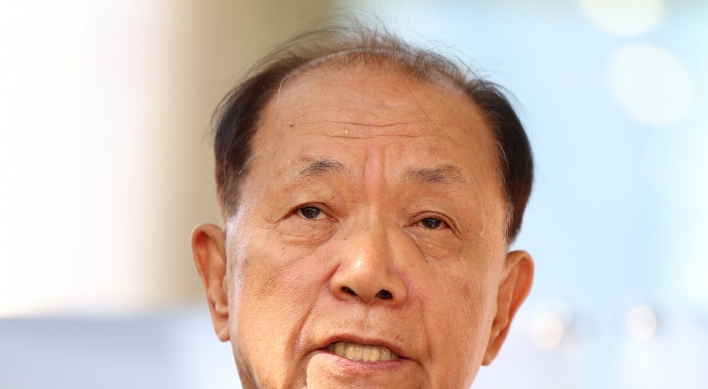[Editorial] Foreign residents
Policies lag behind surge in multicultural families
By 김케빈도현Published : May 3, 2016 - 17:52
Justice Ministry data showed early this week that the number of foreign nationals in South Korea, including tourists, has topped 1.9 million for the first time, heralding the upcoming era of 2 million foreigners.
The figure of 1.94 million foreign nationals far surpasses the population of Daejeon, which is estimated at 1.51 million. It is also close to that of South Chungcheong Province, whose population is 2.07 million.
Considering that Daejeon is the nation’s fifth-largest city and South Chungcheong Province is ranked fourth in population out of the nine provinces, the proportion of foreigners to total residents has reached a noteworthy level. The figure in March recorded a 7.2 percent increase compared to a year before.
Data showed that, compared to two years ago, the number of migrant spouses increased by 1.2 percent to 152,025.
Korea has no history of a large immigrant population and the growing presence of multicultural families is certainly a new challenge. We could learn from the experience of other countries such as the United States, a nation of immigrants, and chart our own course.
State-led efforts should be seen as an investment in the country’s future, as these children may play important roles in a globalized world, where language skills and cultural sensitivities are vital. Indeed, giving them the opportunity to develop their potential is a smart investment.
It is encouraging that there are many organizations and groups that offer assistance to foreign residents and multicultural families. But social surveys pointed out that these groups, mostly privately operated, suffer from financial difficulties and lack of expertise. This is a gap that both the central and local governments can fill.
In discussing how to integrate multicultural families as well as other foreign residents into Korean society, it should be remembered that efforts must also be made by Koreans to understand and appreciate the newcomers and cultural heritage they bring with them. Ignorance breeds prejudice.
According to other government statistics, the number of children with multicultural backgrounds has risen more than eightfold over the past decade -- from 2006 to 2015. Separate government data shows that there are about 208,000 children in multicultural families living in Korea as of last year.
One critical point in this data is that about 20 percent of all multicultural children aged 15-24 are not in school or out of work.
The figure of 1.94 million foreign nationals far surpasses the population of Daejeon, which is estimated at 1.51 million. It is also close to that of South Chungcheong Province, whose population is 2.07 million.
Considering that Daejeon is the nation’s fifth-largest city and South Chungcheong Province is ranked fourth in population out of the nine provinces, the proportion of foreigners to total residents has reached a noteworthy level. The figure in March recorded a 7.2 percent increase compared to a year before.
Data showed that, compared to two years ago, the number of migrant spouses increased by 1.2 percent to 152,025.
Korea has no history of a large immigrant population and the growing presence of multicultural families is certainly a new challenge. We could learn from the experience of other countries such as the United States, a nation of immigrants, and chart our own course.
State-led efforts should be seen as an investment in the country’s future, as these children may play important roles in a globalized world, where language skills and cultural sensitivities are vital. Indeed, giving them the opportunity to develop their potential is a smart investment.
It is encouraging that there are many organizations and groups that offer assistance to foreign residents and multicultural families. But social surveys pointed out that these groups, mostly privately operated, suffer from financial difficulties and lack of expertise. This is a gap that both the central and local governments can fill.
In discussing how to integrate multicultural families as well as other foreign residents into Korean society, it should be remembered that efforts must also be made by Koreans to understand and appreciate the newcomers and cultural heritage they bring with them. Ignorance breeds prejudice.
According to other government statistics, the number of children with multicultural backgrounds has risen more than eightfold over the past decade -- from 2006 to 2015. Separate government data shows that there are about 208,000 children in multicultural families living in Korea as of last year.
One critical point in this data is that about 20 percent of all multicultural children aged 15-24 are not in school or out of work.






![[KH Explains] No more 'Michael' at Kakao Games](http://res.heraldm.com/phpwas/restmb_idxmake.php?idx=644&simg=/content/image/2024/04/28/20240428050183_0.jpg&u=20240428180321)











![[Herald Interview] Mistakes turn into blessings in street performance, director says](http://res.heraldm.com/phpwas/restmb_idxmake.php?idx=652&simg=/content/image/2024/04/28/20240428050150_0.jpg&u=20240428174656)
